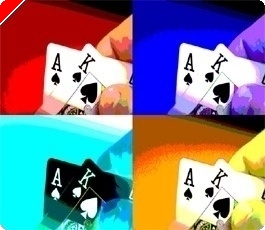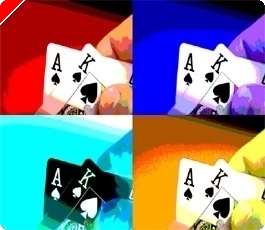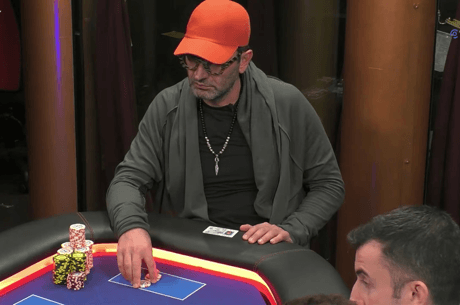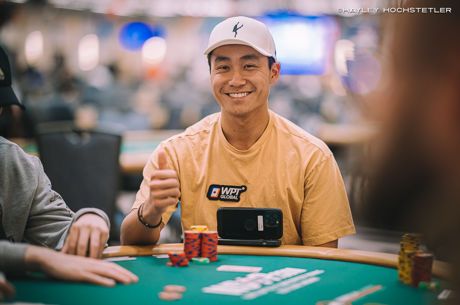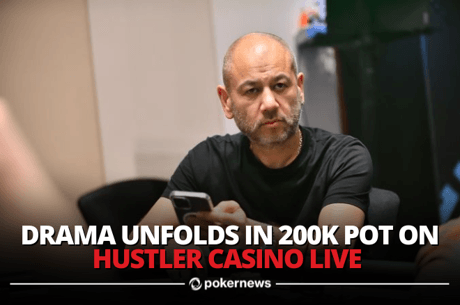Poker & Pop Culture: 'California Split'
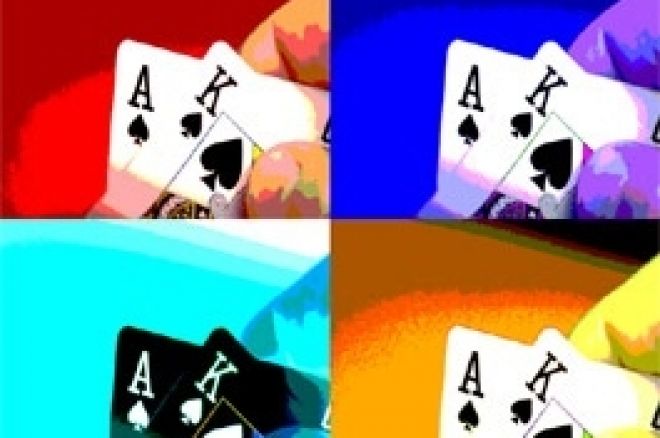
A recurring topic among poker players concerns the relative lack of good feature films depicting poker. Even consensus picks for "best poker films" like The Cincinnati Kid or Rounders are often criticized by poker players for lacking realism, even though a wholly accurate depiction of poker play isn't always a top priority when it comes to cinematic storytelling.
One title that occasionally comes up during these between-the-hands discussions is the 1974 film California Split, directed by Robert Altman and starring George Segal and Elliott Gould. The film features an unorthodox narrative style such as one often finds in other Altman-directed films like M*A*S*H (1970), Nashville (1975), and The Player (1992), with an episodic plot and a busy, sometimes chaotic-seeming mise en scène. That is to say, as is typical for Altman, California Split is a "noisy" film with a lot happening on screen at any given moment. Adding to the sense of disorder was the film's innovative use of eight-channel audio recording, with several scenes set in public places featuring multiple conversations going on at once.
Such a directing style proves especially well suited for scenes shot inside casinos and poker rooms, helping make California Split a film that for many poker players seems more "realistic" than most when it comes to showing what it is actually like to play the game. In truth, the film is not specifically a "poker movie" but more about gambling, generally speaking, with a particular emphasis on the psychology of the dedicated (or obsessed) gambler. But poker is played, and two scenes in particular — the lengthy one set in a California card room that opens the film and a shorter one near the end in a Reno casino — capture the mood and tenor of live poker in a unique, effective way.
Welcome to the California Club
The ten-minute sequence over which the opening credits roll impressively recreates a California poker club from the early 1970s. The set was built out of an old dance hall, although watching the scene one could be easily tricked into thinking it was shot on location at an actual poker club. In fact, on the DVD commentary, screenwriter Joseph Walsh notes that the scene did fool most of the gamblers he knew who insisted it to him it must have been shot at the Gardena or the Commerce, when in fact the set was entirely fabricated.
The film opens on a shot of a big sectioned-off chalkboard on which names of players waiting for seats are being recorded by the board man, atop which one reads "stud," "draw," "jacks to open," and different stakes designating the available games. The announcer's voice can be heard calling players to a game of "five-and-ten draw." The scene functions as the occasion for the initial meeting of Bill Denny (played by Segal) and Charlie Waters (Gould), who as it happens will draw seats at the same table.
While they are separately waiting for their seats, Gould's character chomps on a toothpick while he watches a programmed slide show explaining "How to Play Poker." The slide show's narrator welcomes the viewer to the California Club "where your pleasure is our business." The presentation begins by explaining the game sometimes known as California lowball, a draw game the object of which is to make the best possible ace-to-five low which Bill and Charlie will be playing momentarily. The audio from the presentation continues in the background as Bill and Charlie take their seats, thereby guiding the audience's understanding of what is happening.
Eventually both men take their seats. As the DVD commentary points out, the room is filled with extras from Synanon, a drug rehabilitation program located in Santa Monica which operated as a kind of self-sustaining community back in the 70s and 80s. Walsh notes how these ex-addicts help give the scene an extra "life" and "energy," and "because of what these people had been through... the screen is always alive." It's true — there is a discernable buzz in the air that those who have played live poker will instantly recognize, with the games being played out in the background as animated as the foregrounded one on which we are focusing.
Other extras, including those seated at Bill and Charlie's table, are actual poker players who were veterans of the California poker club scene, thus adding further to the veracity of the presentation. According to the commentary, the scene was mostly unscripted, with much of the table banter being improvised (another typical feature of an Altman film). The players are seated around a round table with circles printed on the green felt indicating where they are to place their antes and blinds. All are quite plain-looking — that is to say, they look like poker players, not movie stars. And, as one would likely find in a early 70s California card room, all are middle-aged or older, with the smoke and sweat further adding to the scene's less than glamorous feel.
As Altman says on the commentary, the "general public doesn't think of gambling or doesn't see gambling done in this way... in other words, they see it more dramatically set up," not in this sort of documentary-like, unembellished style. As was the practice, the players themselves handle the dealing, and eventually a dispute arises between Charlie and an unkempt, irascible opponent named Lew (played by Edward Walsh, the screenwriter's brother). The conflict comes shortly after a hand in which Charlie slowrolled his antagonist somewhat unmercifully, with Gould well playing the needling, smarmy instigator.
The dispute concerns whether or not a card dealt to Charlie by Bill went off the table and hit the floor. The floor man rules the card plays, the hand continues, and when Charlie wins the hand Lew, suspecting collusion between Bill and Charlie, takes it out on Bill. Though relatively brief, the scene wonderfully captures the wide variety of moods poker can produce: pleasure, joy, mischief, impatience, frustration, and even anger.
"Just regular guys who needed to gamble"
Bill and Charlie discover themselves to be kindred spirits, and embark on a series of gambling-related escapades that eventually land them in Reno in hopes of making that one big score. While there Bill gets involved in another poker game, this one for much higher stakes. This second poker scene is less involved than the earlier one, coming as part of the film's final sequence of ever-escalating gambles. The latter scene is nevertheless memorable for at least a couple of reasons.
One is Charlie's priceless pregame commentary in which he characterizes to Bill each player's style and skill level according to his appearance. Poker players should enjoy this scene immensely, with Gould riotously pegging a bald man with glasses as "a percentage player" against whom Bill should only play the nuts, the younger player as someone who "has seen Cincinnati Kid too many times," an older player as a doctor who "would rather lose a patient than a hand," among other reads.
The other reason the scene is memorable is for the cameo by Amarillo Slim Preston, who arrives to reclaim his seat in the game shortly after Bill joins in. Preston, essentially playing himself here, was arguably the "face of poker" back when the film was made, thanks to his frequent appearances on The Tonight Show with Johnny Carson. The subsequent game is not covered specifically, though we get a great sense of Bill's trepidation entering into the rarified, high-stakes arena which for him marks uncharted territory.
In his autobiographical Gambler on the Loose (2008), screenwriter Walsh recounts some details regarding the making of the film, including how Steven Spielberg had at one time been scheduled to direct. Steve McQueen was also originally supposed to star in California Split, likely chosen because of his turn as Eric Stoner in The Cincinnati Kid, though that, too, fell through.
Indeed, the entire project was a difficult one for Walsh (who also co-produced the film) to see through, since Hollywood wasn't terribly interested in making a film in which, as Walsh puts it, the main characters "weren't heroes," but "just regular guys who needed to gamble to feel more alive — basically more victim than hero."
Thankfully that obstacle was overcome, with the result being a terrific, though perhaps underappreciated, cinematic exploration of real poker and gambling, as played and experienced by "regular guys."

